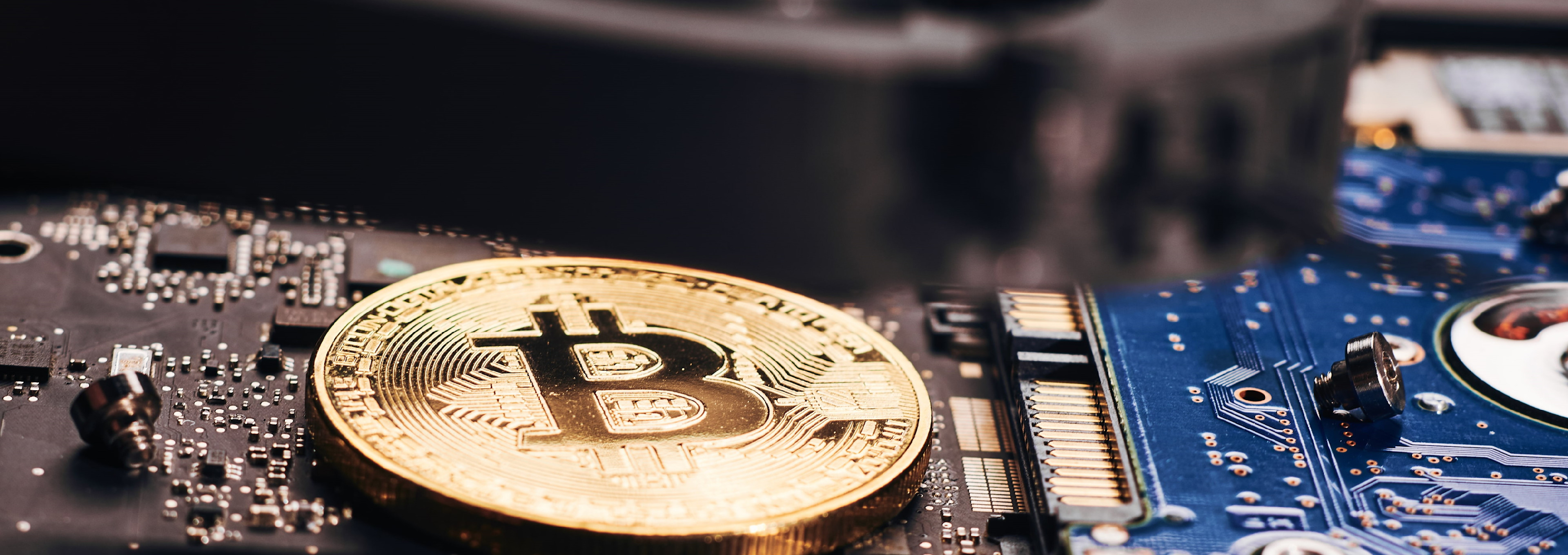投資に関する最新情報や専門家の分析を盛り込んだニュースレター(英文)を定期的にお届けします。


Bitcoin as digital gold – a multi-asset perspective
Bitcoin is often derided as being highly volatile, but as digital gold it could play a role in a multi-asset portfolio, says investor Jeroen Blokland.
まとめ
- Bitcoin reached record high with market cap of over USD 1 trillion
- Its extreme characteristics make it very different from other asset classes
- Research suggests an allocation of 1% to portfolios could work well
The virtual currency reached a record high of more than USD 60,000 in March – rising from lows of under USD 10,000 one year ago – to achieve a market cap of over USD 1 trillion.
Research by Robeco’s Multi-Asset team suggests that bitcoin could be used with a 1% allocation in a standard, well-diversified multi-asset portfolio, providing that certain risk controls and strict portfolio management rules are applied.
“Bitcoin makes the headlines every day – not only because of its meteoric rise and unrivaled volatility, but also due to the heated debate between its supporters and opponents,” says Blokland, Head of the Multi-Asset team.
“What is more interesting to us, however, is that there’s growing consensus on what bitcoin really is. In recent months, a clear and emphatic narrative that bitcoin is becoming a store of value in the form of digital gold has developed.”
“Recently, US Federal Reserve Chairman Jerome Powell referred to bitcoin as ‘essentially a substitute for gold rather than for the dollar’. Just like gold, bitcoin is scarce and durable. In addition, bitcoin exhibits high portability, is easily transactable and programmable. What it lacks relative to gold, of course, is a long history of being perceived as a store of value.”
“As digital gold, bitcoin has monetary value. In our view, the discussion about bitcoin’s lack of intrinsic value is mostly irrelevant. As with diamonds, art, stamps, gold and the US dollar, bitcoin does not provide cash flows. Yet, all these asset classes have monetary value, and most of them are considered to be a store of value.”
最新のインサイトを受け取る
Gold has traditionally been the ultimate asset used as a backstop for economies and hedge against inflation. “Since the end of the gold standard in 1971, gold has significantly outpaced inflation, rising about 7.7% in value per year,” says Blokland.
“This has been accompanied by a realized volatility of 17. Hence, it is flawed to assume that something considered to be a store of value should have a realized return close to inflation with a relatively low amount of risk.”
“Also, an investment in digital gold does not require extreme views on the economy or fiat currency. If you are looking for a potential hedge against inflation, a collapse in real bond yields and/or a devaluation of the US dollar, allocating to digital gold could be a prudent step towards better portfolio diversification.”
An extreme asset class
“Given its potential of becoming a store of value as digital gold, we consider bitcoin to be an asset class, albeit an extreme one. Virtually all of its characteristics are very different from traditional asset classes.”
Bitcoin has certainly delivered returns for those brave enough to hold it. Since July 2010, when it first started trading on exchanges, bitcoin’s average return has been an eye-popping 254% per year, compared to 15% for the S&P 500, the next best-performing asset class.

Bitcoin’s return has been far higher than other asset classes. Source: Bloomberg, St. Louis Fed, investing.com.
“Volatility too is extreme – the average realized annualized volatility of bitcoin is a staggering 114%, almost ten times as much as equites and gold,” says Blokland. “Yet, bitcoin’s Sharpe ratio is significantly higher than that of other asset classes. And bitcoin’s correlation with other asset classes has been close to zero, suggesting sizeable diversification benefits.”
Despite its meteoric rise, bitcoin’s market cap of USD 1 trillion based on the price of USD 55,000 on 29 March translates into a weight of just 0.6% in the Global Multi-Asset Market Portfolio, which consists of the total investable market caps of the major asset classes.

And its recent success is not necessarily sustainable. “Obviously, extrapolating bitcoin’s extraordinary characteristics would lead to some remarkable as well as unrealistic outcomes,” says Blokland. “For example, if we extrapolate bitcoin’s realized return for the next five years, its market cap would rise to over USD 500 trillion.”
“To get to a more realistic estimate of bitcoin’s return going forward, we assume that it reaches the USD 3 trillion market cap of investable gold – gold that is used for investment or is in some way linked to financial markets – somewhere in the next five to ten years. This implies an expected return range of 12%-25% per year.”
How much allocation?
So, how much bitcoin could safely be used in a portfolio? The Multi-Asset team uses a complex ‘smart mean variance optimization framework’ to work out how it could fit into a standard and well-diversified multi-asset fund. This looks at 36 different combinations of bitcoin’s risk, return and correlation with other asset classes.
“Our results are unambiguous – for all 36 combinations of risk-return-correlation, our smart optimization allocates the maximum 2.5% towards bitcoin,” says Blokland. “This is better than we anticipated, expecting some drop-off as the combination of characteristics ‘worsens’.”
“However, based on our impact analysis, for example that bitcoin can represent up to 15% of total portfolio volatility, together with the fact that bitcoin’s volatility is currently still well above our highest estimate of 60%, we believe capping the maximum weight of bitcoin to 1% is warranted. A 1% weight also better aligns with overall portfolio management, including rebalancing.”
Additional considerations
Some additional considerations should be taken into account, Blokland says. “First, the number of investment alternatives is currently limited, but increasing at the same time. The number of investable exchange-traded funds (ETFs) is growing, as is the futures market.”
“Not all ETFs invest in ‘physical’ bitcoins, however. And cold storage cannot always be insured in full. For bitcoin futures, setting up trading accounts is less straightforward, and margin requirements (up to 33%) are much higher than for bonds and equities.”
“Next to that, regulatory aspects should also be taken into account. In Europe, UCITS regulations limit exposure to single-commodity investments. Still, a bitcoin ‘fund investment’ in Europe is possible as an exchange-traded note (ETN).”
Energy concerns
Finally, there is the controversy over the amount of electricity needed to mine digital currencies. “Bitcoin’s assumed energy consumption, as well as its potential use in illicit practices, are further factors of importance,” Blokland says. “They are, however, incredibly complex to judge and value.”
“For example, while bitcoin’s energy use has risen sharply as the processing power (‘hash rate’) to mine bitcoin increases, the impact of this trend depends on the source of the energy. Renewables now represent a significant part of the energy mix, and several studies have emphasized the role of bitcoin mining in reducing the curtailment of renewable energy.”
“But perhaps the most important thing to consider is the fact that bitcoin might not be digital gold, and that there is huge uncertainty surrounding bitcoin’s future compared to asset classes that have a much longer history.”
重要事項
当資料は情報提供を目的として、Robeco Institutional Asset Management B.V.が作成した英文資料、もしくはその英文資料をロベコ・ジャパン株式会社が翻訳したものです。資料中の個別の金融商品の売買の勧誘や推奨等を目的とするものではありません。記載された情報は十分信頼できるものであると考えておりますが、その正確性、完全性を保証するものではありません。意見や見通しはあくまで作成日における弊社の判断に基づくものであり、今後予告なしに変更されることがあります。運用状況、市場動向、意見等は、過去の一時点あるいは過去の一定期間についてのものであり、過去の実績は将来の運用成果を保証または示唆するものではありません。また、記載された投資方針・戦略等は全ての投資家の皆様に適合するとは限りません。当資料は法律、税務、会計面での助言の提供を意図するものではありません。 ご契約に際しては、必要に応じ専門家にご相談の上、最終的なご判断はお客様ご自身でなさるようお願い致します。 運用を行う資産の評価額は、組入有価証券等の価格、金融市場の相場や金利等の変動、及び組入有価証券の発行体の財務状況による信用力等の影響を受けて変動します。また、外貨建資産に投資する場合は為替変動の影響も受けます。運用によって生じた損益は、全て投資家の皆様に帰属します。したがって投資元本や一定の運用成果が保証されているものではなく、投資元本を上回る損失を被ることがあります。弊社が行う金融商品取引業に係る手数料または報酬は、締結される契約の種類や契約資産額により異なるため、当資料において記載せず別途ご提示させて頂く場合があります。具体的な手数料または報酬の金額・計算方法につきましては弊社担当者へお問合せください。 当資料及び記載されている情報、商品に関する権利は弊社に帰属します。したがって、弊社の書面による同意なくしてその全部もしくは一部を複製またはその他の方法で配布することはご遠慮ください。 商号等: ロベコ・ジャパン株式会社 金融商品取引業者 関東財務局長(金商)第2780号 加入協会: 一般社団法人 日本投資顧問業協会





















